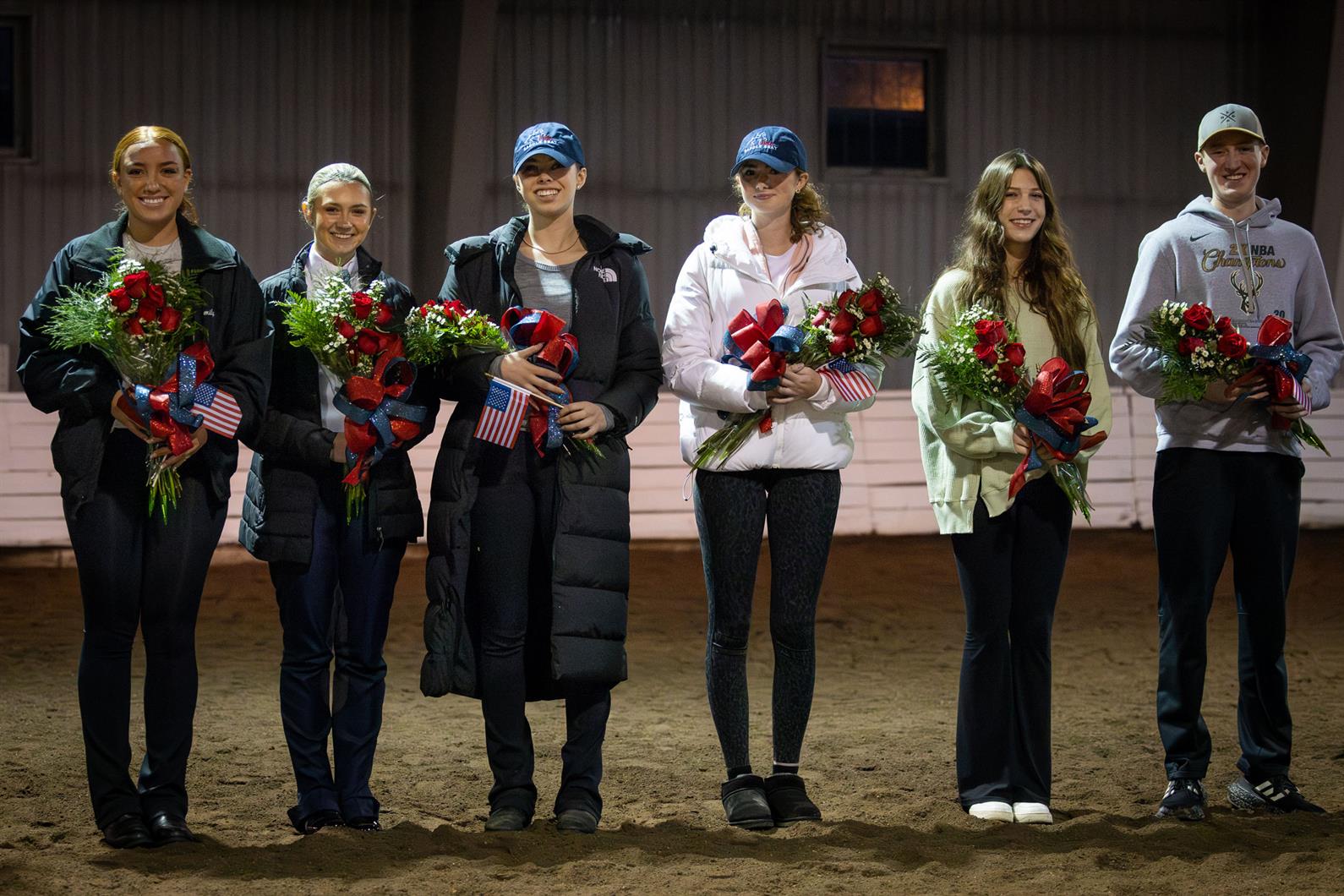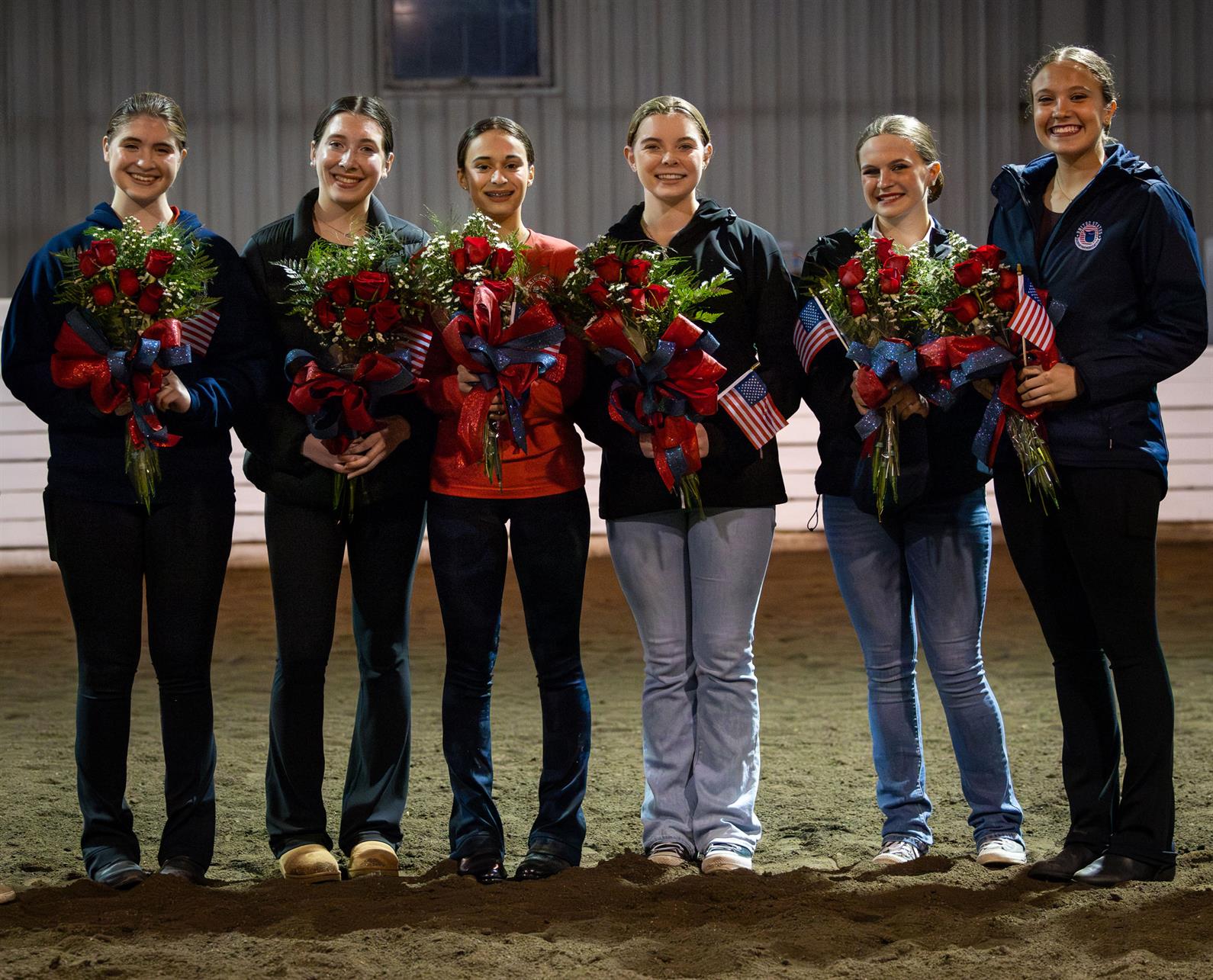Fulton, Mo. – Twelve saddle seat equitation athletes earned their tickets to South Africa on Saturday at the Saddle Seat World Cup Selection Trials. The U.S. will field two teams—one three-gaited and one five-gaited—with six athletes on each team for the 2024 International Saddle Seat World Cup in Parys, South Africa, next December.
The team members are listed below in ranked order.

Three-Gaited:
- Richie Dallen (Pewaukee, Wisc.)
- Ava Bertagnolli (Rices Landing, Pa.)
- Madeline Von Ballmoos (Manchester Center, Vt.)
- Emily Egner (Hinesville, Ga.)
- Madison Hoffmeyer (Linden, Mich.)
- Grace Biron (East Aurora, N.Y.)

Five-Gaited:
- Samantha Silverstein (Derby, Kan.)
- Alexa Finley (Washington, Mich.)
- Ellie Riva (Fayston, Vt.)
- Olivia Mirza (Tualitan, Ore.)
- Eloise Eirich (Charlotte, N.C.)
- Abigail Asiatico (Odessa, Fla.)
The International Saddle Seat World Cup tests riders on their horsemanship by requiring competitors to complete rail work and pattern work on an unfamiliar horse provided by owners in the host country and selected by random draw. The team trials replicate this format with horses furnished by William Woods University’s Equestrian Studies program. Each rider competes on two horses, giving the judges the opportunity to evaluate their ability to adapt to different rides.
Sarah Track is an Assistant Professor of Equestrian Studies and saddle seat program instructor at William Woods. She has facilitated the biannual World Cup Team Trials since beginning her role at the University in 2010. She will also be one of the four coaches for the 2024 World Cup teams along with Georgia and Jimmy Morrison and Pam Roush.
“The judges are looking for somebody who can solve problems and really get on and catch ride,” said Track. “If the horse throws in problems, how as a rider do they react? If the horse does something goofy, can they handle it? If they’re going to go on to represent the United States, they need to be able to ride any horse, within reason. If it’s spooky or very forward, they need to be able to ride and assess that horse in just a few minutes of a warmup and then be able to do a pattern. They need to kind of thrive on that adrenaline. When they go to a World Cup, they’re riding horses that aren’t being trained for them. They have to ride what’s there, and I think there’s something fun about that.”
In the lead-up to the trials, Track and her students analyze the horses currently in the barn to determine which ones will be good candidates for the trials. The horses in the program are donated to the University, and while many are experienced show horses, Track says very few of them are fully equitated. For some, being asked to do simple lead changes, figure eights, transitions off the rail and other elements of an equitation workout are a brand new concept. Practicing pattern work and evaluating how the horses take to it takes an increased role in her applied riding classes ahead of the trials.
Of the two patterns that the athletes complete for the judges, one is more straightforward and the other is more complex. The pool of horses in the draw are allotted accordingly, with the better equitated horses used for the trickier pattern and the more challenging horses assigned for the simpler one. This helps in keeping the horses mentally and physically comfortable and the riders safe while also giving the judges the chance to evaluate the riders in varied circumstances so that they can choose the best team members to represent the U.S.
The World Cup team coaches and selected athletes will reconvene for practice sessions as a group closer to the competition, and will have other team outings to give the athletes the opportunity to get to know each other better in the long lead-up to the event.
“It’s good for our industry and it’s good for the riders to be a team and get to know each other,” said Track. “It’s a shared experience, whether it’s the thrill of victory or the agony of defeat. It gives them a broader experience and makes them better riders. They seem to really like the camaraderie, and I think it’s awesome, because the more that we can get people excited about not just showing [on the regular show circuit], but riding, the better it is for the horses, because they’re a little bit more appreciated. And it’s good for the industry, because more people are going to want to do it. These team members are now going to become some other kids’ idols.”
Learn more about the Saddle Seat World Cup here.
Support Saddle Seat
Sponsorship with the U.S. Saddle Seat World Cup Team offers a unique opportunity for companies to gain global visibility while engaging with a dedicated fanbase. Learn more about sponsorship opportunities here. Contact Layson Griffin, Senior Director of Sponsorship and Sales, at [email protected] for more information.
For individual donations, visit www.usef.org/donate and select “U.S. Saddle Seat World Cup” from the dropdown menu.
Stay Connected
Keep up to date with Team USA and US Equestrian Saddle Seat programs by following USA Saddle Seat on Facebook and US Equestrian on Twitter, Instagram, YouTube, and TikTok. Use #USASaddleSeat.


